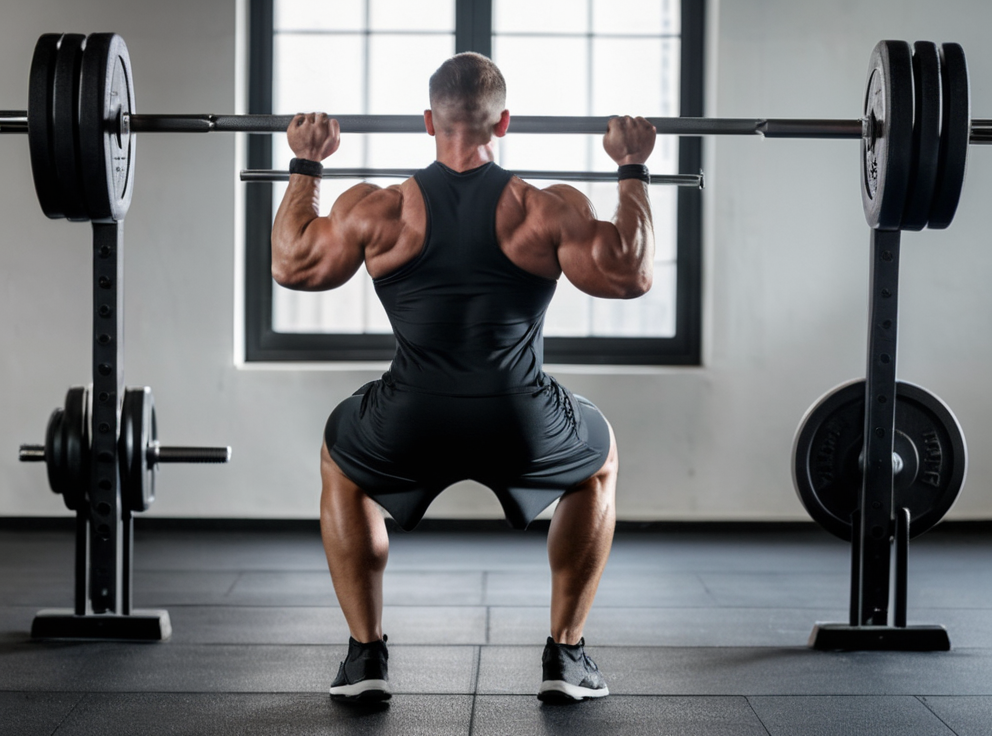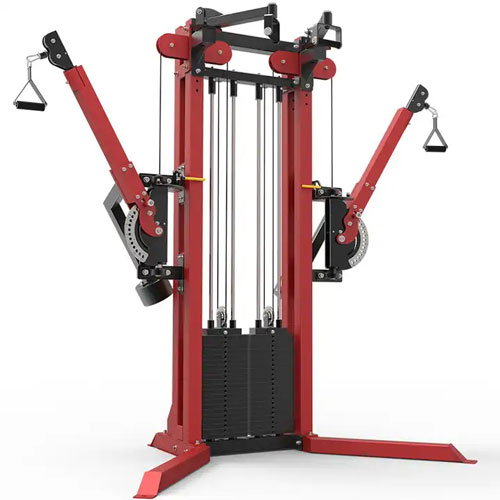How Important is It to Use a Mat Under a Weight Bench

Imagine this: You're finally setting up your dream home gym, meticulously choosing weights, a sturdy weight bench, and… a gaping hole in your plan. That nagging feeling in the pit of your stomach telling you something's missing? It might be a mat. The creaking of your hardwood floors as you lower that heavy barbell, the worried glance at your expensive Persian rug, or the impending dread of a neighbor's noise complaint – these are all scenarios that highlight the importance of considering a mat for your weight bench. So, the core question: Is a mat necessary under a weight bench? The answer, as we'll explore, is nuanced. A mat under a weight bench isn't always essential, but offers significant benefits depending on your situation and priorities. This guide will help you determine if a mat is a crucial investment or an optional extra.
Protecting Your Floors: Preventing Costly Damage
Your flooring is a significant investment, and damage from a weight bench can be surprisingly extensive and expensive to repair. The type of flooring you have drastically affects its vulnerability.
- Hardwood: Prone to scratches, dents, and indentations from dropped weights or the constant pressure of the bench's legs. Repairs can involve costly sanding, refinishing, or even replacing entire planks.
- Carpet: While seemingly more forgiving, heavy weights can flatten the pile, creating permanent indentations. Moisture from sweat can also seep into the padding, leading to mildew and unpleasant odors.
- Tile: Generally more resilient, but dropped weights can still chip or crack tiles, resulting in costly replacements.
- Concrete: The most resistant, but even concrete can suffer from staining and indentation over time, especially with heavier weights.
A simple mat can act as a buffer, absorbing impact and preventing these costly damages. Imagine replacing a damaged hardwood floor: the labor, material costs, and disruption to your home can easily run into hundreds, even thousands, of dollars. A preventative mat, on the other hand, costs a fraction of that and offers long-term protection.

Reducing Noise and Vibration: A Harmonious Home Gym
Weightlifting inevitably generates noise and vibrations, especially with heavier weights and intense training. The thud of weights, the scraping of metal, and the vibrations travelling through your floor can be disruptive to your household and, especially, your neighbours.
Repeated loud noises can lead to friction with roommates or neighbours, potentially escalating into complaints or even legal issues. A thick, well-designed mat significantly reduces noise and vibrations. Materials like rubber and high-density foam are particularly effective at absorbing impact sound.
Consider the scenario of living in an apartment building. The sounds of your workout, amplified by the building's structure, can travel easily to neighbouring units. A mat can be the difference between maintaining harmonious relationships with your neighbours and facing complaints or conflicts.
Enhancing Stability and Safety: A More Secure Workout
A mat doesn't just protect your floors; it also enhances the stability and safety of your weight bench. Uneven surfaces can cause the bench to wobble, increasing the risk of accidents. A mat provides a level, stable base, preventing slippage and ensuring a secure workout. This is especially important during demanding exercises like bench presses or overhead presses, where stability is paramount to avoid injury.
A stable bench reduces the chance of the bench shifting during heavy lifts, minimizing the risk of dropped weights or injuries. The increased safety benefits not only the user but also protects the surrounding environment from damage caused by accidental weight drops.
Types of Mats for Weight Benches: Finding the Perfect Fit
The market offers a variety of mats specifically designed for weightlifting. Choosing the right one depends on your needs and budget.
- Foam Mats: Affordable and relatively lightweight, these provide good cushioning and noise reduction. However, they might be less durable than other options and can compress over time.
- Rubber Mats: More durable and provide superior shock absorption and noise dampening. They're more expensive but offer long-term value.
- Puzzle Mats: Interlocking tiles that can be customized to fit any space. Easy to clean and replace individual tiles if damaged. However, the seams can be a tripping hazard.
- Yoga Mats: Generally thinner and less durable than dedicated weightlifting mats. Suitable for lighter weight training but not ideal for heavy lifting.
Consider the size and thickness of the mat. It should extend beyond the base of the weight bench to provide adequate protection and stability. Thicker mats (at least ½ inch to 1 inch) offer better cushioning and noise reduction.
(Include links to recommended mats on Amazon or other retailers here.)
When a Mat is Absolutely Necessary: Non-Negotiable Situations
In certain situations, a mat isn't just recommended; it's absolutely necessary.
- Apartment Living: The potential for noise complaints and damage to shared floors makes a mat indispensable.
- Delicate Floors: Hardwood, parquet, or tiled floors require extra protection. The risk of irreversible damage far outweighs the cost of a mat.
- Upper-Story Apartments: The impact of weights is amplified on upper floors, making noise reduction even more critical.
Failing to use a mat in these situations could lead to costly repairs, strained relationships with neighbours, or even legal disputes.

When a Mat Might Be Optional: Weighing the Costs and Benefits
In some scenarios, the need for a mat is less critical.
- Concrete Floors: Concrete is naturally resistant to damage, making a mat less essential. However, a mat can still improve stability and reduce noise.
- Garages: The environment of a garage is usually more forgiving, and the potential for damage is reduced.
- Dedicated Workout Rooms with Resilient Flooring: If you have a dedicated workout room with rubber or similar flooring already installed, a mat might be redundant.
In these situations, a cost-benefit analysis is appropriate. Weigh the price of a mat against the potential risks of damage or noise complaints. If the risks are minimal, a mat might be an optional expense.
Alternatives to Mats: Exploring Other Options
While mats are the most common solution, other options exist.
- Plywood: A sheet of plywood can provide a solid, level base for the weight bench. However, it offers no cushioning or noise reduction.
- Heavy-Duty Carpet: A thick carpet can offer some protection but might still show indentations over time.
These alternatives are usually less convenient and effective than dedicated weightlifting mats, lacking the cushioning, noise reduction, and stability benefits.
Conclusion: Making the Right Choice
A mat under a weight bench offers multiple benefits: floor protection, noise reduction, enhanced stability, and increased safety. Whether or not it’s necessary depends on your specific circumstances. Consider your flooring type, your living situation, the intensity of your workouts, and your budget. If you're in an apartment, have delicate floors, or are prone to dropping weights, a mat is virtually non-negotiable. If you have resilient flooring and a dedicated workout space, it becomes a more optional, though still beneficial, investment. Prioritize safety and consider the long-term cost of potential damage against the relatively low cost of a protective mat.
Bonus Section: DIY Mat Solutions
For the budget-conscious, consider repurposing thick rubber sheets, interlocking foam tiles, or even using multiple layers of cardboard or heavy-duty padding for a more economical, albeit less aesthetically pleasing, solution. Remember, safety and effectiveness are paramount regardless of your chosen method.
FAQ About Using a Mat Under a Weight Bench
1. Why should I use a mat under my weight bench?
Using a mat under your weight bench protects your floors from scratches, dents, and other damage caused by heavy weights or constant pressure. It also reduces noise, prevents vibrations, and provides a stable base, ensuring a safer workout.
2. Can I use any mat under my weight bench, or do I need a specific one?
While any mat can offer some protection, a mat specifically designed for weightlifting is ideal. Rubber mats or high-density foam mats provide better shock absorption, noise reduction, and stability compared to standard household mats.
3. Do I need a mat if I have concrete floors?
Concrete floors are resistant to damage, but using a mat still offers benefits. It helps reduce noise, improves the stability of your weight bench, and adds extra cushioning for a more comfortable and safer workout.
4. How do I choose the right mat for my weight bench?
Consider factors like durability, thickness, and material. Rubber mats are highly durable and effective at noise reduction. A thickness of at least ½ inch to 1 inch provides better cushioning and stability. Make sure the mat is large enough to cover the entire area under the weight bench.





